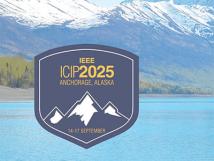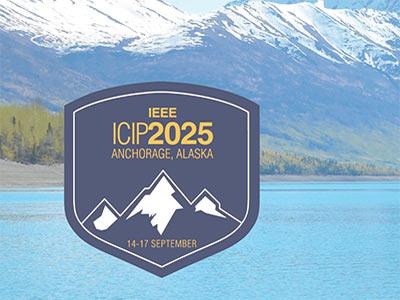
IEEE ICIP 2025 - The International Conference on Image Processing (ICIP), sponsored by the IEEE Signal Processing Society, is the premier forum for the presentation of technological advances and research results in the fields of theoretical, experimental, and applied image and video processing. ICIP has been held annually since 1994, brings together leading engineers and scientists in image and video processing from around the world. Visit the website.

- Read more about Video - 3DGS_result_from_16.40_and_17.27
- Log in to post comments
The video represents the Sheep-Sculpture rendering at 360 degrees of view by the original 3DGS method from a dataset that contains the 16:40 and 17:27 time intervals images.
- Categories:
 23 Views
23 Views
- Read more about Video - Ours_estimated_16.59_from_16.40_and_17.27
- Log in to post comments
The video represents the Sheep-Sculpture rendering at 16:59 from 360 degrees of view by our time-dependent modeling method from a dataset that contains the 16:40 and 17:27 time intervals images.
- Categories:
 25 Views
25 Views
- Read more about Supplementary - Towards Image Copy Detection at E-commerce Scale
- Log in to post comments
Copy Detection system aims to identify if a query image is an edited/manipulated copy of an image from a large reference database with millions of images. While global image descriptors can retrieve visually similar images, they struggle to differentiate near-duplicates from semantically similar instances. We propose a dual-triplet metric learning (DTML) technique to learn global image features that group near-duplicates closer than visually similar images while maintaining the semantic structure of the embedding space.
- Categories:
 22 Views
22 Views
- Read more about Supplementary Materials for ICIP2025
- Log in to post comments
Supplementary Materials for "RETHINKING IMAGE HISTOGRAM MATCHING FOR IMAGE CLASSIFICATION" at ICIP2025.
- Categories:
 127 Views
127 Views
- Read more about USER-IN-THE-LOOP VIEW SAMPLING WITH ERROR PEAKING VISUALIZATION
- Log in to post comments
Augmented reality (AR) provides ways to visualize missing view samples for novel view synthesis. Existing approaches present 3D annotations for new view samples and task users with taking images by aligning the AR display. This data collection task is known to be mentally demanding and limits capture areas to pre-defined small areas due to ideal but restrictive underlying sampling theory. To free users from 3D annotations and limited scene exploration, we propose using locally reconstructed light fields and visualizing errors to be removed by inserting new views.
- Categories:
 120 Views
120 Views
- Read more about Supplementary Materials for "WEAKLY SUPERVISED DEFECT LOCALIZATION WITH RESIDUAL FEATURES"
- Log in to post comments
Supplementary Materials for "WEAKLY SUPERVISED DEFECT LOCALIZATION WITH RESIDUAL FEATURES"
- Categories:
 90 Views
90 Views
ICIP2025_1674_supplementary-material_Multi_Res_3DGS
- Categories:
 33 Views
33 Views
- Read more about SUPPLEMENTARY OF IMPROVING OPEN-WORLD CLASS-AGNOSTIC OBJECT DETECTORS VIA FEATURE DISTILLATION WITH STUDENT-AWARE ADAPTATION
- Log in to post comments
Supplementary of IMPROVING OPEN-WORLD CLASS-AGNOSTIC OBJECT DETECTORS VIA FEATURE DISTILLATION WITH STUDENT-AWARE ADAPTATION
- Categories:
 39 Views
39 Views
- Read more about Supplementary Materials For ICIP2025
- Log in to post comments
Supplementary Materials of "CURVE: CLIP-Utilized Reinforcement learning for Visual image Enhancement via Simple Image Processing" submitted to ICIP 2025
- Categories:
 182 Views
182 Views
- Read more about ENACT: Entropy-based Clustering of Attention Input for Reducing the Computational Resources of Object Detection Transformers - Supplementary Material
- Log in to post comments
Transformers demonstrate competitive performance in terms of precision on the problem of vision-based object detection. However, they require considerable computational resources due to the quadratic size of the attention weights.
- Categories:
 42 Views
42 Views